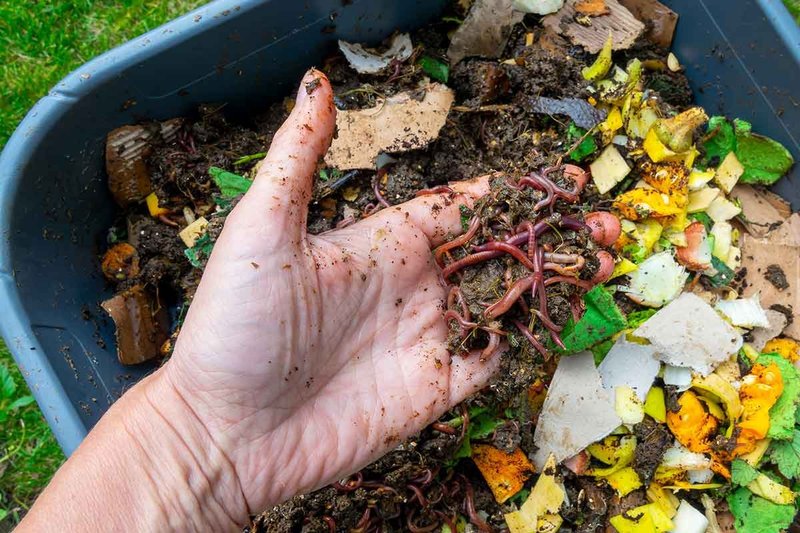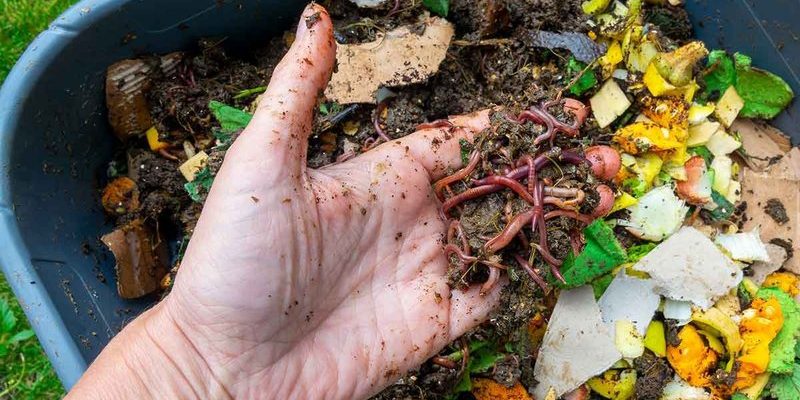
Now, you might be asking, “What’s a hammerhead worm anyway, and how do I keep them out of my compost?” Great question! Hammerhead worms are flat, elongated creatures, often with a distinct hammer-like shape at one end—hence the name. They can be quite a nuisance as they’re predatory and feast on beneficial worms in your compost. So, let’s dive into how to compost the right way, ensuring that your garden remains healthy without these little troublemakers.
Understanding Hammerhead Worms
Before we jump into the hows and whys of effective composting, it’s important to understand what hammerhead worms are and what they do. These worms, part of the Phagocata family, are non-native to many regions, including parts of the United States. They usually appear in moist environments and can be quite colorful, often featuring shades of brown or yellow.
So why should you care about them? Simply put, hammerhead worms are predatory. They can eat beneficial organisms in your compost, like earthworms and even the microbes that help break down organic material. Think of them as the villains in your composting story. If you’re serious about creating a thriving compost pile, keeping them at bay is crucial!
Why Composting at Home is Important
Composting not only reduces waste but also has a positive impact on the environment. When you compost, you’re diverting organic materials from landfills—where they would produce harmful methane gas—and instead creating nutrient-rich soil for your plants. This is like giving your garden a vitamin boost!
Moreover, composting improves soil structure, helps retain moisture, and supports healthy microbial activity. These benefits can lead to better plant growth, higher yields, and even fewer pests in the long run. Essentially, composting is a win-win for both your garden and the planet.
How Hammerhead Worms End Up in Your Compost
You might be wondering how these pesky hammerhead worms even find their way into your compost pile in the first place. The truth is, they can hitch a ride on various organic materials you might add. If you’re composting yard waste, such as leaves or grass clippings from a yard that has hammerhead worms, there’s a chance they’re included in that material.
Additionally, they can come from garden soil or even on the roots of new plants. Are you bringing any new vegetables or flowers into your garden? Always check for unwanted guests. It’s always better to be safe than sorry!
Best Practices for Composting Without Hammerhead Worms
Now that you know what you’re up against, let’s look at how to successfully compost while keeping hammerhead worms at bay. Here’s a list of best practices to follow:
- Use Trusted Sources: Only add materials from reputable sources. If you’re picking up mulch or compost, make sure it’s free from worm issues.
- Monitor Temperature: Keep your pile hot! The ideal composting temperature is between 130°F and 160°F. This helps kill off any eggs or immature worms that might be hiding.
- Regularly Turn Your Pile: This helps aerate the compost and ensures even temperatures throughout. The more you turn it, the less likely hammerhead worms will settle in.
- Limit Certain Materials: Be cautious with materials like untreated grass clippings from areas known to have hammerhead worms. If in doubt, leave it out!
By following these practices, you can create an environment that’s less hospitable to hammerhead worms while nurturing beneficial organisms.
Identifying Hammerhead Worms in Your Compost
So, you’re doing everything right with your compost, but how can you tell if hammerhead worms have snuck in? These worms can be identified by their distinctive shape and color patterns. They are typically flat and may have a length of up to 18 inches, with a broad, flat head that resembles a hammer.
You might spot them crawling around when you turn your compost. If you see them, don’t panic! Just take action. It’s crucial to remove any hammerhead worms you find and monitor your compost regularly.
What to Do If You Discover Hammerhead Worms
If you do find hammerhead worms in your compost, it’s important to act quickly. Here’s a step-by-step guide on what to do:
1. Remove the Worms: Use gloves and a trowel to dig them out. They can be squished, but it’s better to dispose of them away from your compost area.
2. Inspect Your Materials: Check any new materials before adding them to the pile. Look for signs of hammerhead worms or other pests.
3. Maintain High Temperatures: Ensure your compost pile maintains that hot temperature mentioned earlier. If your pile isn’t heating up, adjust it by adding browns (like dry leaves) to help boost the heat.
4. Keep Monitoring: After addressing the issue, keep an eye on your compost. Regular checks can prevent a small problem from turning into a larger infestation.
Alternatives to Traditional Composting
If you find that hammerhead worms are a persistent problem, you might want to consider some alternatives to traditional composting. Here are a few ideas:
- Bokashi Composting: This method involves fermenting organic waste in a sealed container with bokashi bran. It’s great for smaller spaces and doesn’t have the same pest issues as traditional composting.
- Vermicomposting: This method uses worms, but specifically red wigglers, which are beneficial for composting. It’s done in a controlled environment, minimizing pest problems.
- Composting in Place: Instead of a compost pile, you can dig a hole in your yard and bury kitchen scraps. This method attracts nature’s decomposers without the risk of attracting hammerhead worms.
Exploring these alternatives can keep your composting journey smooth and hassle-free.
Wrapping It Up
So, there you have it! Composting is a wonderful way to give back to your garden while being mindful of unwanted guests like hammerhead worms. By understanding what these worms are, recognizing the signs of their presence, and implementing best practices, you can enjoy the many benefits of a thriving compost pile without the drama. Remember, just like gardening itself, composting is about trial and error, so don’t be discouraged. With a little patience and care, you’re sure to create nutrient-rich compost that your plants will love!

